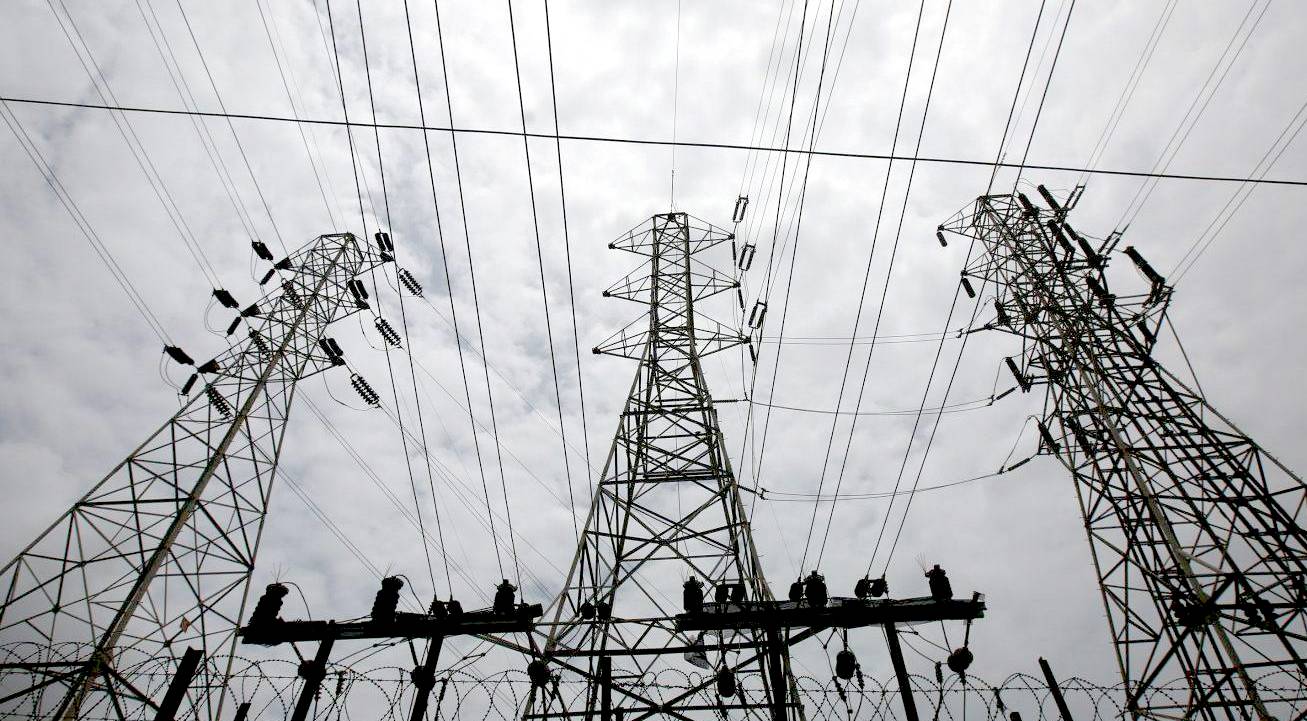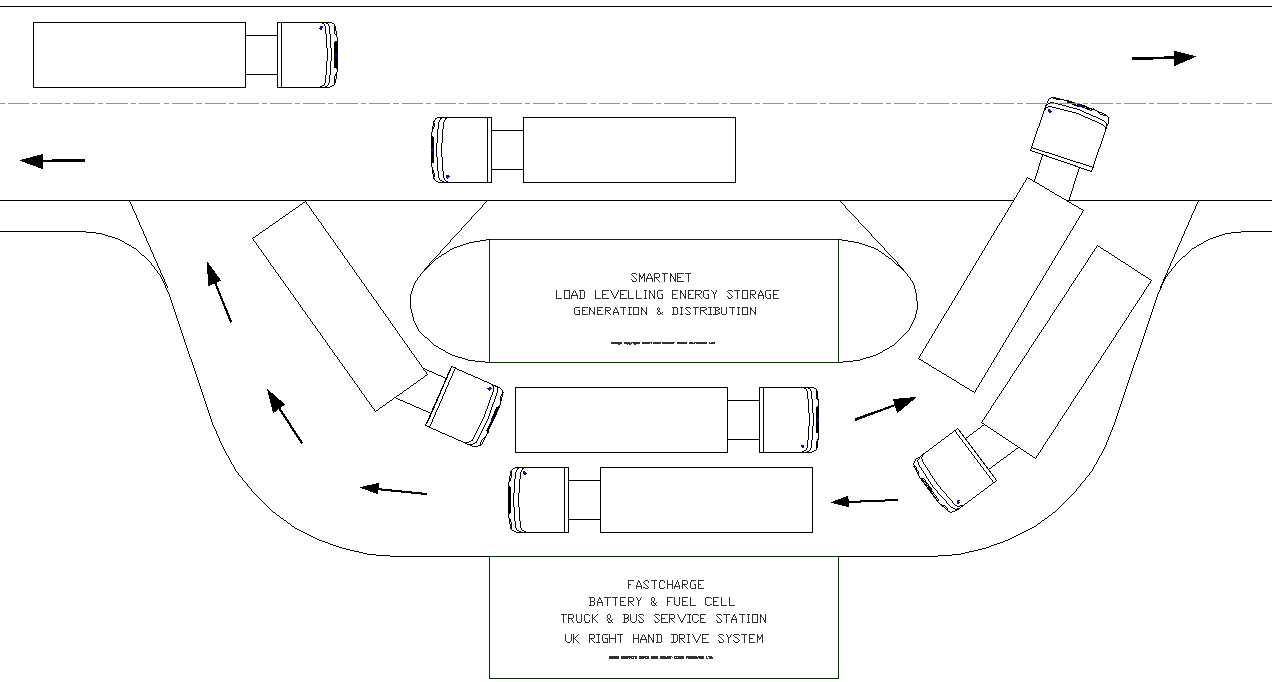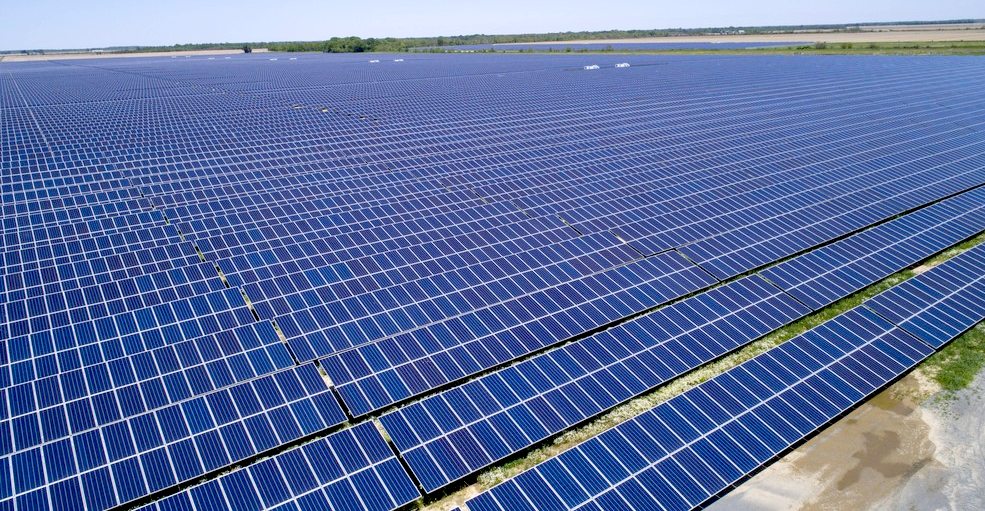|
ENERGY DISTRIBUTION
Please use our A-Z INDEX to navigate this site where page links may lead to other sites, or see HOME
|
|
HIGH VOLTAGE - Every country uses high voltage cables to transmit electricity via a grid. mostly over ground using steel pylons. The higher the voltage, the lower the transmission losses. Nevertheless, the length of cables and transformer efficiency, also play a part in designing and efficient system.
Electricity is the most convenient way of transmitting clean, alternative energy, from the point of origin (conversion from natural harvesting) to the end user.
There are though degrees of efficiency and a system can always stand a little tweaking as demand for energy increases from that used in homes and factories to include electric transportation.
It is also true that energy may be generated at inconvenient times of day and at inconvenient locations, such that wind farms may stand idle because there is no means of storing the energy they are producing for use when the demand arises in another location at another time. The same may be said for solar farms.
Even where solar and wind farms are located conveniently to the end user, unless demand matches weather cycles, storage capacity will be beneficial as a load leveler.
The ability to store electricity is thus valuable in terms of making the best use of renewable assets. In such cases re-distribution of electricity from one geographical location to another, even with transmission losses, might become an attractive proposition.
Here we are talking about windy areas and barren deserts that are useless in terms of farming or real estate, but are wonderful in terms of harvesting energy from nature.
DUAL PURPOSE BATTERY STORE - This diagram shows a SMARTNET service facility in plan view, with articulated trucks turning in from a (UK right hand drive) main road, into the service station - passing through for battery swapping - and then exiting back onto the main road. The suggested layout speeds up refills and assists traffic flow in busy cities. This battery storage facility carries 60 standard cartridges, but can carry 96 battery units in the same footprint. Alternatively, a flat-pack station with a smaller footprint can be installed in congested towns. Electricity can be stored in the facility for load leveling, then fed back to the local grid for distribution, to use wind and solar generated energy more efficiently.
As an aid to the electrification of cities for bus based public transport, stations like these would avoid the need to install thousands of individual charging points, meaning that 2030 climate change targets might be met, having already missed the 2020 targets set by the EU.
OFF PEAK CONVERSION
Energy that would otherwise be dumped in one location, may be purchased off-peak and re-sold at peak rates at another location, thus making networks more cost effective, or profitable.
The same is true of locally generated solar and wind energy, that might otherwise be wasted. But with a storage capacity, could be utilised almost in entirety.
DEREGULATION
As a result of the application of deregulation in the electric power sector, a new identity appeared in the electric power system map known as “Distributed Generation” (DG). Instead of using 100 MW to GW sized units located far from the loads, disbursed generation sites might be kW to MW scale - located closer to natural resources and local loads.
Distribution networks were initially designed as passive systems, which provided one-way transmission links between the power network and electricity end users. The introduction of DG is resulting in many distribution networks becoming energy harvesting systems, with much more variability and bi-directional power flows where there are high penetrations of DG.
ENERGY DISTRIBUTION, GENERATION & STORAGE
If properly planned and operated, dispersed storage and generation may provide benefits to distribution systems by reducing capacity requirements, improving reliability, and reducing overall losses.
Dispersed-storage-and-generation technologies can include hydroelectric systems, diesel generators, wind-electric systems, solar-electric systems, batteries, storage space and water heaters, storage air conditioners, hydroelectric pumped storage, photovoltaics, and fuel cells.
WHAT
IS DG DISTRIBUTED GENERATION?
JAPANESE CHAdeMO - In Japan, this ultrafast charging follows the standard of CHAdeMO (the acronym of “charge de move”, equivalent to “move by charge”) which offers charging capacity of 10–50 kW. Until the end of 2015, there are about 6000 ultrafast chargers following CHAdeMO standard across Japan. CHAdeMO chargers can facilitate bidirectional electricity flows resulting in possible charging and discharging of EVs. In addition, intelligent controlling system is also generally installed inside the charger, hence high level communication and control can be achieved.
MANAGEMENT CHALLENGES
This creates many new challenges for utilities, and requires distribution networks to be operated as active distribution systems, with real-time control and optimization of multiple distributed energy resources.
This is one of the most important concepts around distributed energy management systems, operator systems designed for decentralized management of DG and other energy resources connected to the distribution networks.
In addition, the microgrid concept is another aspect of energy management needing to be optimized in the DG context, also contributing to energy for transportation.
CLASSIC
ELECTRICITY PARADIGM - CENTRAL POWER STATION MODEL
Classic
centralized power models, require distribution from the central power
stations to outlying consumers. Current substations can be anywhere from 10s to 100s of miles away from the actual users of the power generated. This requires transmission across the distance.
Many of these issues can be mitigated through distributed energies. By locating, the source near or at the end-user location the transmission line issues can be negated.
Distributed generation (DG) is often produced by small modular energy conversion units like solar panels. As has been demonstrated by (for example) solar panel use in the United States, these units can be stand-alone or integrated into the existing energy grid. Frequently, consumers who have installed solar panels will contribute more to the grid than they take out resulting in a win-win situation for both the power grid and the end-user. Both scenarios might benefit from a storage capacity for load leveling.
DSG - In the world of energy storage from multiple inputs, both local and national grids play a part to provide a pool of electricity with many variables. Battery storage load leveling helps to smooth peaks and troughs and provide a more reliable system with the potential to be more efficient.
Distribution networks carry power the last few miles from transmission or sub-transmission to consumers. Power is carried in distribution networks through wires either on poles or, in many urban areas, underground. Distribution networks are distinguished from transmission networks by their voltage level and topology. Lower voltages are used in distribution networks, as lower voltages require less clearance. Typically, lines up to 35 kV are considered part of the distribution network.
FROM SPACE EXPLORATION TO ZERO EMISSIONS - Developed to power satellites and spacecraft, the silicon solar panel is now a cost effective way of generating clean electricity. Ideal sites for the location of solar farms is land that cannot be used for farming, such as the deserts we have created.
According to Power-Technology.com, a website that provides market and customer insights in this sector, they listed these power companies (according to the 2018 Forbes calculation of net market capitalization, assets, sales and profit) as the biggest utilities:
DOE Department of Energy USA KEPCO Korean Electric Power Corporation National Electric Grid & Central Electricity Authority (India) National Energy Board (Canada) National
Grid plc (formerly Central Electricity Generating Board UK) State Grid Corporation of China TEPCO Tokyo Electric Power Company
FUSION | BIOFUELS | GEOTHERMAL | HYDRO-ELECTRIC | SOLAR | WAVE & TIDAL | WIND
LINKS & REFERENCE
https://en.wikipedia.org/wiki/Distributed_generation https://theect.org/distributed-generation-storage/ https://www.kinectrics.com/Solutions/Pages/Distributed-Generation-Services-.aspx https://www.dg.history.vt.edu/ch1/introduction.html https://www.sciencedirect.com/topics/engineering/electric-power-distribution
ENERGY CRISIS - Some countries act as though there is no energy crisis where they have an abundance of fossil fuel reserves, but they will be unable to milk the remainder of the world with the allure of cheap fossil fuels and energy independence for renewables becomes the norm. We must help those blinded by kleptocratic policies to stop killing species and warming the planet.
Please use our A-Z INDEX to navigate this site
|
|
|
This website is provided on a free basis as a public information service. copyright © Climate Change Trust 2021. Solar Studios, BN271RF, United Kingdom.
|






